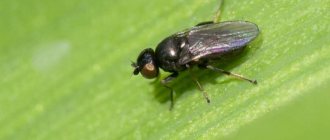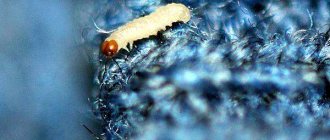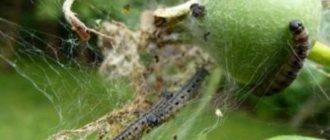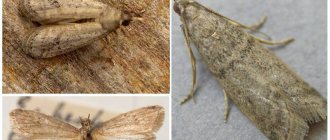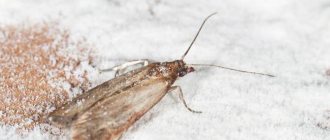An insect with the rare name Tuta absoluta from the Lepidoptera family, which is better known to us as the South American tomato moth, is the main pest of tomatoes in South America, where the larvae of this insect, feeding on the leaves and fruits of tomatoes, cause considerable damage.
Since the first discovery of this pest in Europe - in Spain, in 2006, the insect has quickly spread through Southern Europe, reaching our regions. The South American tomato moth is a type of pest that appeared in our country relatively recently and requires sufficient attention due to its high adaptability to the environment and reproduction rate.
Our article today is dedicated to the tomato moth, in which we will tell you what this pest is and also describe the main possible methods of control. The information will be useful for all residents of the southern regions of our country, as well as areas bordering them.
Geographical distribution
The tomato leaf miner is a common pest for Central American countries, which in the second half of the 20th century spread to the entire South American continent and the countries of Southern Europe. The tomato moth has been recorded in Bolivia, Brazil, Chile, Colombia, Ecuador, Paraguay, Uruguay and Venezuela, so it can be argued that the insect thrives in regions located at an altitude of less than 1000 m above sea level.
In Europe, the moth first appeared in Spain in 2006, where it is currently the predominant pest of tomatoes. It is necessary to take into account the fact that these countries are today considered the main suppliers of export tomatoes, including Turkey, from where tomatoes are brought to us. Algeria and Morocco, which also regularly supply Russia with this type of vegetable, reported outbreaks of tomato moth in 2008.
Tuta absoluta also grows actively in Italy, France and Tunisia. All European “records” of this insect, to date, have been registered specifically on tomato crops, without signs of damage to other plants.
On the territory of the Russian Federation, the tomato moth was first discovered in 2008, during an inspection of exported products from South America and Turkey. As an established pest, the insect was discovered in the Krasnodar region in 2010. By the end of 2011, tomato moth larvae were already found everywhere by farmers in the Republic of Adygea, Dagestan and Bashkiria, both in open ground and in closed greenhouses. Among the neighboring countries, Belarus, Ukraine and Lithuania are in the high-risk zone.
Nature of damage
As with other insect pests of the large moth family, damage to human activities occurs due to the activity of the larvae. Adult tomato moths are not harmful to tomato production. The larvae, actively feeding, literally bore leaves and fruits, thereby producing extensive and deep tunnels, causing significant losses in the yield of protected and open ground.
Photos along the way will tell you what the above-ground part of plants looks like after the activity of the tomato moth.
A characteristic feature of this type of insect is that the larvae feed on mesophilic leaf tissues and, as a consequence, the formation of irregularly shaped “mines” on its surface. Therefore, the South American tomato moth is often called the tomato leaf miner. As a result, after the activity of the pest, tomato leaves begin to resemble translucent gauze, while maintaining their shape. The amount of such damage can reach up to 100%, and throughout the entire tomato growing cycle.
It is worth noting that Tuta absoluta is characterized by a fairly high ability to reproduce. One butterfly can bring up to 10-12 generations per year, under favorable conditions. In addition, larvae are extremely unlikely to enter a state of diapause as long as a food source is available.
Other characteristics of the pest’s life include the following:
- Moths can overwinter at any stage of their life cycle—egg, pupa, or adult. Although for those regions where this type of insect lives, the concept of “overwintering” is quite arbitrary, it would be more accurate to put it - to wait out the absence of tomato bushes.
- An adult female can lay hundreds of eggs during her entire life, and given the rapid maturation of the offspring, during the season one butterfly alone can bring thousands of small worms that actively eat tomato crops.
- Tomato bushes can be attacked at any stage of their growth - from seedlings to mature plants. The main thing is that there is a green mass of leaves.
- The moth attacks the apical buds of the plant, leaves, stems, flowers and fruits. In a word, the entire above-ground part of the culture, which is then, among other things, strewn with a large amount of black dried excrement.
As noted above, tomato moth pests reduce the yield and quality of tomato fruits grown in a greenhouse or in open ground. During mass attacks of the pest, tomato fruits lose their commercial value, and such losses can amount to 50-100% of the entire cultivated area.
Because the larvae are pests that often feed inside the fruit, it is difficult to achieve effective control when using chemical insecticides. In addition, the butterfly’s body is able to quickly develop resistance to various types of chemicals, therefore, as a rule, after 1-2 years, populations appear with reduced sensitivity to insecticides that were previously effective.
Life cycle and reproduction
Having turned into a moth, the moth in the greenhouse no longer poses a direct threat, since it does not feed on plants. But at this time, the pests begin their breeding season, because it is the adults who lay eggs, from which voracious larvae hatch.
It is noteworthy that from the first days of life, hatched caterpillars begin to actively mine fruits and leaves of plants; in other words, they simply gnaw passages in them, damaging plant tissue. In this case, pests choose only green fruits that have not yet ripened.
The female of the presented butterfly is capable of laying up to 300 eggs in one clutch. After only 4 to 6 days, caterpillars appear from them, capable of leading a hyperactive lifestyle. After two weeks, the caterpillars acquire a pink color, entering the pre-pupal phase. At this moment, the insect leaves its tunnels, chooses a shelter in which it weaves a cocoon, and transforms into a pupa.
Another 10 days will be needed for the metamorphosis process, as a result of which an adult moth is born, ready to reproduce the next generation. During one season, the insect is capable of reproducing 12 generations. At the same time, the active lifestyle of the pest begins already at a temperature of +9°C.
If there are butterflies flying in the greenhouse that look like moths, disinfection should not be shelved. Under the natural conditions of the Eurasian continent, the tomato moth is not able to survive the winter, but it hides well in greenhouses and vegetable stores.
Brief Developmental Biology
Tuta absoluta is a pest with high reproductive potential. In addition to the fact that a butterfly can produce about 10-12 generations per year, each of which contains up to 300 eggs, the full biological cycle of the insect is completed in just 30-35 days.
Adults are predominantly nocturnal and hide between leaves during the daytime. Their body size is about 5-7 mm, with a wingspan in adult females up to 8-10 mm. The eggs of the tomato moth are small, cylindrical, creamy white to yellow, difficult to see with the naked eye - 0.35 mm. Hatching occurs 4-6 days after oviposition has taken place.
The larvae are cream-colored with a characteristic difference in the form of a dark head. During the growth process, this stage of the insect's life goes through four stages of maturation. If there is food, the larvae never enter a state of diapause. This sign further complicates pest control. Pupation can occur in the soil, on the surface of leaves, or in tunnels made in the fruit.
The most important identifying features of an adult butterfly are the thread-like antennae, which are silver-gray in color, and the distinctive black spots on the forewings. The larvae change color as they mature, making it possible to predict the time of pupation. In the first stages of growth they are transparent green and then become light pink. The larval period is the most destructive for tomatoes, which ends in 12-15 days.
How to identify tomato leaf miner
After the discovery of the first foci of infection of tomato plantings by the Tuta absoluta pest, emergency measures were taken, which are standardly used in such cases. This is the establishment of an agricultural quarantine and treatment of the quarantine zone with pesticides, the complete destruction of affected plants, followed by an agrotechnical scheme (disking the soil and deep plowing). It seemed that the mining moth had been stopped - but it was too early to rejoice. Tutu absolute is still periodically discovered in various countries and regions.
To better understand how to fight the enemy, you need to know him in person. The photo shows that the outwardly dangerous pest at the imago (adult insect) stage is an inconspicuous small (no more than 6 mm) brownish butterfly, which hides during the day and becomes active in the evening or at dawn. More females are born and they lay tiny cylindrical white eggs on the underside of tomato leaves. As the larva grows and develops inside the egg, the egg darkens and turns brown.
The larva (aka caterpillar, when it grows to its maximum) has fantastic gluttony and omnivorousness regarding various parts of tomatoes: it feeds on everything on tomatoes except the roots, eating out flowers and buds, stems and leaves from the inside, and even getting inside the fruits. At the same time, the degree of maturity of the vegetable crop does not matter at all for the mulberry absolute moth; both seedlings and grown tomato bushes suffer equally.
The maximum size of an adult larva is about 10 mm. This is the tomato moth, which is ready to pupate and move on to the last stage of its life in the form of a modest butterfly, laying eggs and then dying with a sense of accomplishment.
Tomato moth: control measures
As already noted, the fight against tomato moth presents certain difficulties. In countries where this pest is one of the first places in plans for the development of control measures, the method of pheromone traps is actively used. Using this method, they learned to monitor and catch pests, concentrating them in one place for the convenience of subsequent physical destruction.
Traps based on the Qlure-TUA pheromone are ideal for mass capture of pests, especially when growing tomatoes in protected soil.
This approach helps to significantly reduce the pest population in greenhouses, especially if fine mesh nets are additionally used at the entrance. Mass trapping of moths involves placing a large number of traps in various strategic positions to remove a sufficiently large number of male insects from the pest population.
The pheromone method is widely used in combination with other control methods to achieve acceptable levels of damage and reduce dependence on insecticidal treatments.
Due to the small distribution of tomato moths in tomato growing conditions in Russian regions, pheromone traps are an exclusive method that is practically not available to a wide range of consumers.
Biological methods
The tomato moth has quite a lot of its own predators, the use of which in the fight against the pest brings a certain degree of success. However, as in the case of pheromones, this method of control is little used in our country, at least for now. Below is a list of actively used living organisms for which tomato moth larvae are the main source of nutrition or maintenance of their genus. More detailed information about these living organisms can be found in additional sources:
- Trichogramma pretiosum.
- Trichogramma achaeae.
- Macrolophus tais.
- Nesidiocoris tenuis.
- Nabis pseudoferus
It is worth noting that the activity of the Trichogramma fly shows the greatest effectiveness in biological control of tomato moth - the effect of destroying the pest reaches 91.74%.
Microbial control with Bacillus thuringiensis shows satisfactory effectiveness against tomato leafminer infestations in countries where this pest is most common. In addition, the entomopathogenic fungus Metarhizium anisopliae may be responsible for the 37.14% mortality rate of female moths. cases, and Beauveria bassiana can cause 68% larval mortality.
Among plant insecticides, neem seed extract containing azadiractin, which acts as a contact and systemic insecticide against tomato moth, shows a good effect. When soil was treated with a formulation containing neem oil, 50-100% larval mortality was recorded. Applying oil to the surface of tomato leaves gives the same result. But treatment of the larvae themselves with a solution shows comparatively lower results.
Pest control measures
Despite the fact that modern industry offers a fairly large number of chemicals to combat tomato moths, in some cases gardeners still have to use old folk remedies. Firstly, the drugs produced are not always effective enough, and secondly, they are chemicals, which means that all products are toxic to one degree or another, and some of them even pose a huge danger, especially for allergy sufferers.
Biological methods
In nature, there are several species of living organisms that can cope with the invasion of tomato moths with a certain degree of success.
The most famous of them are the following:
- Trichogramma achaeae;
- Macrolophus Thais;
- Nesidiocoris tenuis;
- Pseudoferus Nabi;
- Trichogramma pretiosum.
The Trichogramma fly is particularly effective in combating tomato moths. In this case, the effectiveness of the event reaches 91.74%.
Various representatives of the fauna that happily eat caterpillars can be excellent helpers in the fight against moth larvae:
- Beetles of various species will not refuse such food, as well as tree bugs, which feed on both larvae and adults of the pest.
- The most active fighters against leafminer moths are birds: starlings, sparrows, and tits.
- For the same purpose, in places where leafminer moths accumulate, a trichogramma ichneumon is bred, which lays eggs inside the insect larvae, as a result of which they die.
You can fight against leafminer moths using folk remedies. A good result is shown by an extract from neem seeds, which contains an active substance - azadiractin , which promotes the systemic destruction of tomato moths.
A natural remedy, which includes neem oil, successfully copes with pest larvae, showing quite high efficiency (up to 50-100%). The drug can be used to treat the soil and also applied to the surface of leaves.
Plant protection from leafminer moths
In places where miners accumulate, comprehensive measures are taken to destroy the pest and protect plants, which is carried out in several stages .
- First of all, you need to select resistant varieties and types of plants for your site. The fact is that leafminer moths do not damage all types of plants of the same crop. For example, small-flowered chestnut is completely resistant to colonization by miners, and on red chestnut, moth larvae die in the early stages of development.
- Also, for preventive purposes, it is recommended to regularly inspect plants. The sooner the pest is detected, the less damage it will have time to cause.
Mining moths can come to your site along with purchased seedlings , as well as cut and potted flowers.
- Before transferring the soil for planting from your site to the greenhouse, it is necessary to sift it, since pupae of many leafminers can overwinter in it.
- During the growth period of tomatoes and other crops, it is recommended to hang small pieces of plastic, yellow boards or plates coated with glue along the rows of plants. This will serve as a kind of trap for insects during their flight.
- Against tree moths, adhesive belts are used, which are applied to tree trunks before the butterflies begin to fly.
- You should also regularly remove the affected leaves or parts thereof and then destroy them.
- Parasitic insects purchased from a specialized enterprise will help save your plants from the invasion of leaf miners. However, this method is effective only in greenhouse conditions.
To combat tomato moths in open ground, chemical and agrotechnical methods are used in combination . They consist of the following actions:
- Regular destruction of weeds (especially the nightshade family).
- After harvesting, the tops must be burned.
- When the pest population is high, plants and the soil around them are treated with chemicals such as Fufanon, Aktara, Aktellik.
- When the density of insects is low, biological products are used: Baciturin, Boverin grain-BL, etc.
An invasion of tomato moth can be compared to an attack of locusts , however, the competent use of preventive measures and timely use of insecticides will help save the plantings and, accordingly, preserve the harvest.
Chemical control
Frequent intensive use of insecticides leads to the development of insect resistance to the effects of insecticides. In particular, already in the second year of use, resistance to the pyrethroid group of drugs, for example, methamidophos and cartap, appears. However, there are also long-lasting active ingredients that have been shown to be effective against tomato moth larval infestations.
These include imidacloprid, indoxacarb, spinosad and deltamethrin. However, it must be remembered that the use of products of this series is limited to use only on tomato leaves, since their accumulation in the tunnels made by the larvae in the fruits can be harmful to human health.
Good Agricultural Practices
Compliance with tomato cultivation practices has a significant additional effect in the fight against the South American tomato moth. Top of the list is growing non-nightshade crops next to tomatoes, annual deep plowing, timely irrigation, destroying affected plants and cleaning up plant debris in the fall.
Additionally, crop rotation and removal and destruction of infested plant material are important control practices that would help eradicate this pest in greenhouses.
Greenhouse protection
Methods of protecting greenhouses from tomato moths include measures to prevent the appearance and stop the reproduction of pests. Follow these steps:
- Greenhouse crops are quarantined for at least 10 days before planting in the ground.
- Treat the seedlings with chamomile infusion or a weak solution of potassium permanganate.
- Insects are introduced into greenhouses and feed on the larvae and eggs of the tomato moth.
- Greenhouses and soils are treated with aqueous chemical or biological solutions against moths.
- A fine-mesh mesh is placed on the ventilation vents and the entrance to the greenhouse to prevent pests from getting inside.
In cases of severe infestation, the bushes are treated with insecticides.

